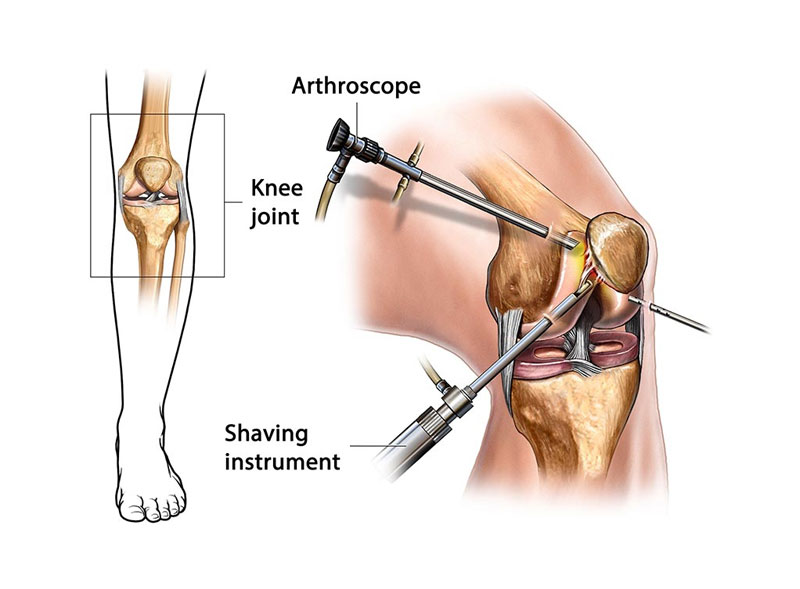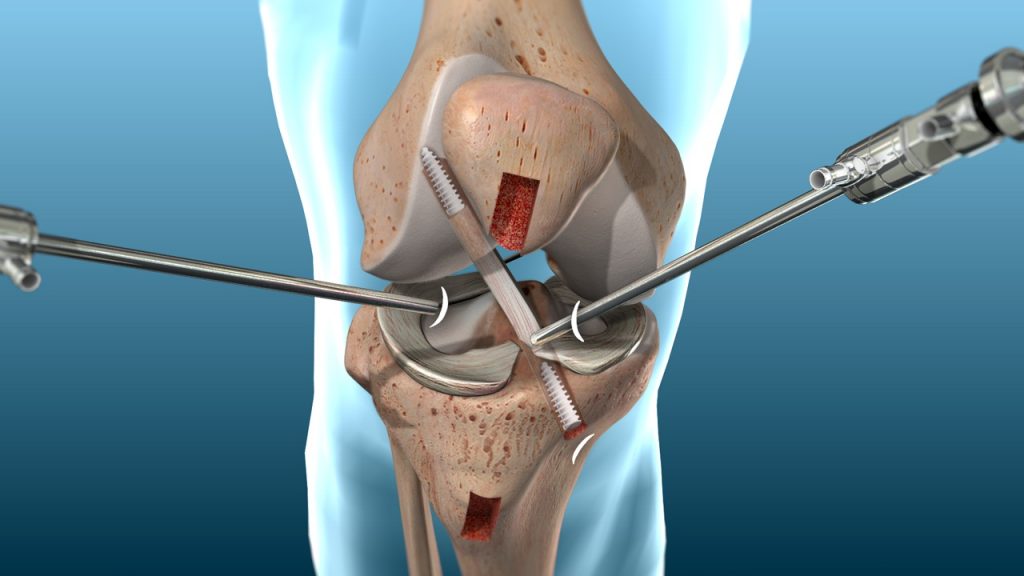ACL reconstruction is a specialised surgical procedure aimed at restoring the integrity of the anterior cruciate ligament (ACL), a crucial component of the knee joint. This surgery involves replacing a torn ACL with a carefully selected tissue graft, enhancing knee stability and facilitating a successful recovery.

During ACL reconstruction, the torn ligament is replaced with a carefully selected tissue graft, chosen based on factors such as the patient's age, activity level, and overall health. Common graft sources include the patellar tendon, which runs between the kneecap and tibia, the hamstring tendon located at the back of the thigh or the quadriceps tendon at the front of the thigh. In some cases, allografts (donor cadaveric tendons) may be employed. The surgical process is generally performed with the assistance of arthroscopy, a minimally invasive technique utilising a small camera inserted through a small incision. Arthroscopic ACL reconstruction offers several advantages, including reduced pain, faster recovery, and a shorter hospital stay compared to open surgery.
1. Anaesthesia: ACL reconstruction is typically conducted under general anaesthesia. Local anaesthesia is often administered at the surgical site towards the end of the procedure to minimise discomfort.
2. Pre-Surgery Preparation: Achieving full extension (straightening) of the knee is a crucial prerequisite before surgery. This ensures optimal conditions for the procedure and contributes to a smoother recovery.
3. Recovery and Swelling Control: Patients awaken within a short time after the surgery and are usually able to eat and drink within a few hours. An inflatable cuff (Cryo-Cuff) filled with iced water is applied to the knee to manage swelling. Drains may be placed in the knee joint to prevent excess blood accumulation and are usually removed within six hours post-surgery.
4. Early Mobilisation: Swift post-operative rehabilitation is essential. A physiotherapist will guide patients through exercises to regain knee extension and improve quadriceps muscle function. While a brace or splint is typically unnecessary, crutches are commonly used for about two weeks.

As with any surgical procedure, ACL reconstruction carries inherent risks. These include general surgical risks, anaesthesia-related complications, infection, bleeding, and blood clot formation.
Specific risks associated with ACL reconstruction may include knee stiffness, pain and bruising at the graft donor site, irritation from hardware used to secure the graft, and the possibility of injury of either the ACL graft or the other knee when returning to sports.
Recovering from ACL reconstruction requires commitment and patience. Rehabilitation plays a crucial role in achieving optimal outcomes. The newly transplanted tissue gradually integrates into the knee joint, requiring time for full healing. The length of recovery varies, but athletes looking to return to sports may anticipate a timeframe of nine months or more before resuming normal sporting activities.
At OSV, our skilled orthopaedic specialists are dedicated to providing comprehensive care throughout the ACL reconstruction journey. We tailor personalised treatment plans, guide you through every step of the procedure, and support your rehabilitation efforts. Contact us today to embark on a path toward renewed knee stability and enhanced quality of life.
If you are looking to book an appointment, please call us on